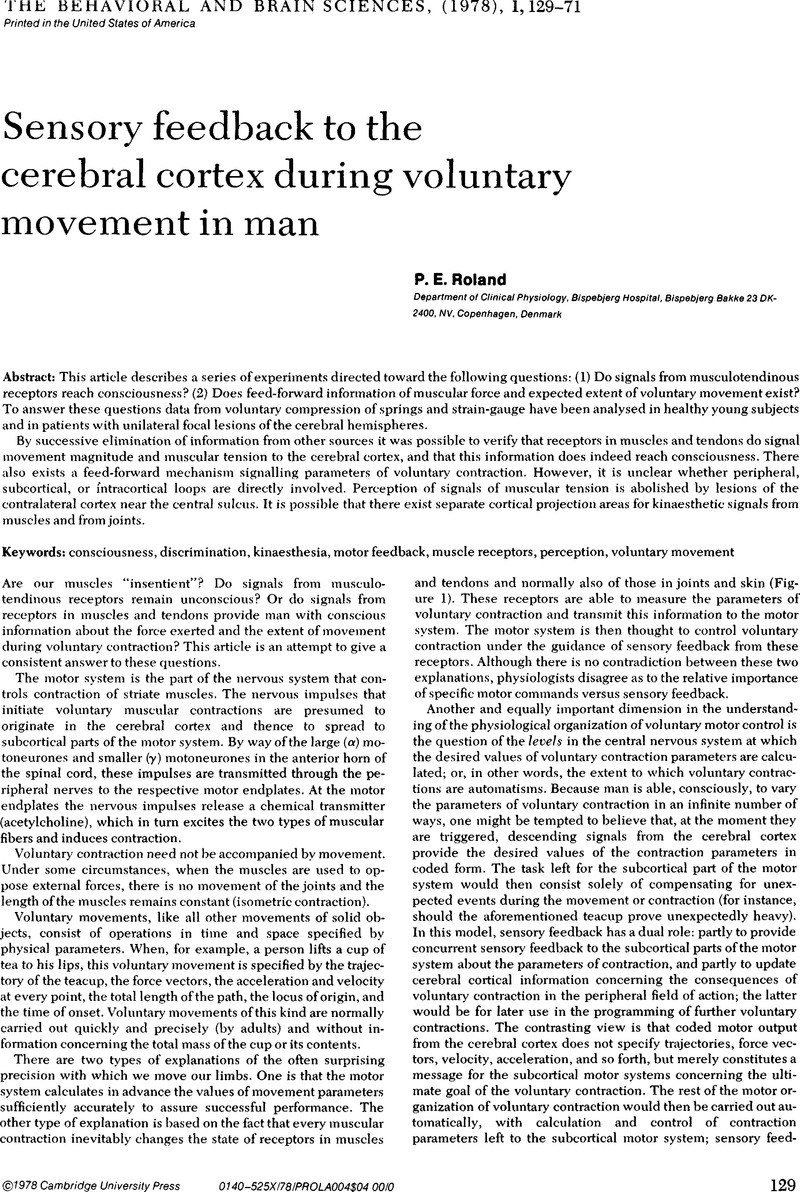Evarts, E. V., and
Fromm, C. (
1977) Motor cortex units discharging most intensively with small precisely controlled arm movements are most sensitive to sensory inputs arising from the arm. Poster Presentation, Society for Neuroscience, Abstract No. 859, p. 271.
Google Scholar 